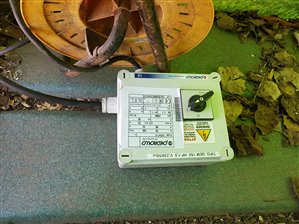Hello
I have a problem with a newly installed domestic borehole pump. This is to replace the original pump which after 20 years has given up the ghost.
The pump appears to operate satisfactorily except that it trips the consumer unit elcb on starting and only on starting. Resetting the elcb allows the pump to run normally. The time taken to push the elcb switch back up is presumably sufficient for some transient effect to end.
The house wiring is exactly the same as for the original pump, which ran satisfactorily for 20 years.
The installer has carried out all the tests normally conducted on the pump and pump cable (continuity, insulation, running current, etc.) and claims that the pump is not faulty. Yet it trips the elcb on startup.
I will welcome any suggestions for a solution. The installer is a one man firm and is reluctant (to say the least) to change the pump.
Mike Lee


